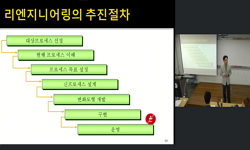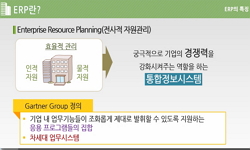혁신활동과 기업가정신의 활성화를 강조하는 창조경제의 시대에서 기술집약적 중소기업의 성과창출이 갖는 경제적, 정책적 및 전략적 의미와 그 중요성은 점차 높아지고 있다. 이들 중소기...
http://chineseinput.net/에서 pinyin(병음)방식으로 중국어를 변환할 수 있습니다.
변환된 중국어를 복사하여 사용하시면 됩니다.
- 中文 을 입력하시려면 zhongwen을 입력하시고 space를누르시면됩니다.
- 北京 을 입력하시려면 beijing을 입력하시고 space를 누르시면 됩니다.

기술집약적 중소기업의 핵심성과지표로서 기술경쟁력의 영향 = Technological Competitiveness as a Key Performance Indicator for High-Tech SMEs
한글로보기https://www.riss.kr/link?id=A100316294
- 저자
- 발행기관
- 학술지명
- 권호사항
-
발행연도
2014
-
작성언어
Korean
- 주제어
-
등재정보
KCI등재후보
-
자료형태
학술저널
- 발행기관 URL
-
수록면
67-95(29쪽)
- 제공처
- 소장기관
-
0
상세조회 -
0
다운로드
부가정보
국문 초록 (Abstract)
혁신활동과 기업가정신의 활성화를 강조하는 창조경제의 시대에서 기술집약적 중소기업의 성과창출이 갖는 경제적, 정책적 및 전략적 의미와 그 중요성은 점차 높아지고 있다. 이들 중소기업이 목표된 성과를 달성하기 위해선 빠르게 변화하는 기술시장에 민감하게 반응하고 자사의 혁신활동을 조정·개선하려는 노력이 요구된다. 그리고 이러한 조정과 개선은 성과평가의 지속성과 정확성이 수반되어야 한다. 이에 따라 선행연구는 경쟁자의 모방이 어려운 기업특수자원의 개발·확보가 경쟁우위와 성과창출에 기여 한다는 자원 기반관점에 근거하여 기업이 보유한 자원과 역량이 성과에 미치는 직접적인 영향관계를 검증하고 있다. 그리고 중소기업의 성과지표에 관한 다수의 선행연구는 특허를 포함한 지적재산권의 수, 혁신제품 매출비중, 매출액 대비 연구개발비 비중과 같은 정량적 혁신성과지표와 함께, 매출액 성장률과 투자대비 수익률과 같은 재무적 기업성과지표를 주요지표로 채택하고 있다. 한편, 최근에는 위와 같은 정량적 지표가 자원의 한계성이 높고 혁신의 범위가 좁은 기술집약적 중소기업의 내재적 특성을 정확히 반영하는가에 대하여 의문을 제기하는 연구가 증가하고 있다. 일반적으로, 체계화된 경영관리능력과 연구개발경험이 부족한 중소기업, 특히 신생벤처기업의 경우에는 기술개발에 필요한 자원과 역량을 확보하고 일련의 혁신 프로세스를 통해 기업성과를 창출하기까지 시간적 격차, 즉 리드타임을 겪게 된다. 이들의 혁신 프로세스가 내포한 높은 복잡성과 불확실성에 견주어 볼 때, 측정 가능한 수치적 혁신지표가 가시화되기 어려운 상황 하에서 정량적 평가요소에 대한 지나친 강조는 오히려 지속적인 성과평가를 저해한다. 이는 시장 및 기술변화에 대응하고 신속히 자사의 혁신활동을 조정하는데 방해요소로 작용할 수 있으며, 이들 중소기업에게 보다 중요한 향후 혁신 잠재력에 대한 평가는 간과될 여지가 높다. 또한 자원기반관점에 기반한 다수의 선행연구가 투입-산출-결과의 혁신 프로세스(innovation process input-output-outcome)를 구조적으로 구분하지 않고, 주로 중소기업이 보유한 자원과 역량이 기업성과에 미치는 직접적 효과만을 분석한다는 점에서도 학문적 보완이 시급하다. 이상으로 논의된 문제의식에 근거하여, 본 연구는 기술집약적 중소기업이 기술혁신을 수행하는 가운데 활용 가능한 정성적 핵심성과지표로서 기술경쟁력(technological competitiveness)의 측정을 제안하고, 그 도입의 효과성과 타당성을 실증적으로 분석하기 위해 수행되었다. 우선, 중소기업의 기술혁신에 대한 문헌검토를 통해, 앞서 기술한 정량적지표가 갖는 문제점을 논의하고 정성적 성과지표 도입의 필요성을 기술하였다. 그리고 기술보증기금이 운용 중인 기술가치평가시스템의 정성적 평가요인을 본 연구목적에 부합하도록 조작적 정의를 실시, 중소기업이 개발하는 기술요소에 대하여 우수성, 시장성, 사업성이라는 세 가지 기술경쟁력 측정항목을 산정하였다. 다음, 선행연구에서 기술집약적 중소기업의 주요혁신자원으로 규명된 혁신역량(innovation capabilities)과 기업가적 지향성(entrepreneurial orientation)을 혁신 프로세스 투입으로, 기술경쟁력을 투입에 따른 산출로, 기업성과(business performance)를 투입과 산출의 결과로서 구조화시킨 연구모형과 가설을 수립하였다. 실증분석을 위해 벤처기업인증을 획득한 기술집약적 중소기업을 대상으로 설문조사를 실시, 총 360개의 유효표본에 대하여 위계적 회귀분석으로 가설검증이 이루어졌다. 분석결과, 기술집약적 중소기업의 혁신역량(R&D역량, 생산역량, 마케팅역량, 전략계획역량, 조직관리역량, 학습역량, 자원배분역량)과 기업가적 지향성(혁신성, 진취성, 위험감수성)의 모든 하위요소는 기술경쟁력을 대변하는 개발기술요소의 우수성, 시장성, 사업성을 강화하는데 기여하는 것으로 나타났다. 마케팅역량을 제외한 혁신역량과 기업가적 지향성의 하위요소는 기업성과의 증진에도 효과적인 것으로 나타났다. 그러나 투입-산출(혁신역량/기업가적 지향성→기술경쟁력)의 영향관계가 투입-결과(혁신역량/ 기업가적 지향성→기업성과)보다 높은 설명력과 적합성을 보이는 것으로 확인되었다. 또한 기술경쟁력의 세 가지 하위요소가 기업성과에 미치는 정(+)의 영향이 검증됨과 동시에, 기술경쟁력이 투입(혁신역량/기업가적 지향성)과 결과(기업성과)의 영향관계에서 완전 매개역할을 담당하고 있음이 확인되었다. 이는 혁신역량과 기업가적 지향성이 기술 경쟁력의 강화를 산출하고, 강화된 기술경쟁력이 기업성과라는 혁신 프로세스 결과를 이끄는 순차적이고 구조화된 관계를 분명히 보여준다. 이상의 결과는 연구자가 제안한 기술경쟁력 개념과 측정항목이 기술집약적 중소기업의 정성적 핵심성과지표로서 활용될 수 있음을 시사한다. 즉, 혁신역량과 기업가적 지향성이 기업성과에 미치는 약한 유의적 영향관계를 통해서 추론할 수 있는 리드타임 동안에는 기술경쟁력이 전략적 성과관리목표로서 인식되어야 한다. 나아가 본 연구는 투입-산출- 결과의 관점으로 구조화된 혁신 프로세스 모형을 제시하고, 이에 대한 학문적 이해를 증진하는데 기여하였다. 그리고 해당 모형을 기반으로 중소기업의 혁신 잠재력을 반영하는 기술경쟁력 평가의 적용가능성과 효과성을 검증하였다. 본 연구결과의 학문적, 실무적 시사점과 향후 연구방향은 결론에서 상세히 기술하였다.
다국어 초록 (Multilingual Abstract)
To achieve high performance standards depends on effectively measuring and monitoring company``s performance by reflecting continuously whether a firm reacts and adapts to external changes. A growing number of empirical works support key assertions of...
To achieve high performance standards depends on effectively measuring and monitoring company``s performance by reflecting continuously whether a firm reacts and adapts to external changes. A growing number of empirical works support key assertions of the resource-based view (RBV) literature that a firm``s competitive advantage and performance originated from its unique firm-specific resources and inimitable capabilities. Most based on the literature have examined the immediate impact of resources which a firm possesses on performance, and many of them have emphasized on quantitative indicators to measure innovation performance. However, high-tech small and medium-sized enterprises (SMEs) suffering from lack of resources and managerial expertise usually requires a longer lead time from obtaining resources to achieving anticipated outcomes than expected due to high complexity and uncertainty of their research and development (R&D). During the lead time, the SMEs with insufficient ability to keep evaluating current performance measurement continuously can face a challenge to identify directions for innovation in coping with external changes. In line with RBV, this study aims to develop a performance evaluation framework of innovation process that enables high-tech SMEs to identify the main weaknesses and take corrective measures during R&D periods. Starting from a review of the limitations and recommendations provided in the literature regarding technology and innovation management in SMEs, we propose that technological competitiveness (TC) may be a more accurate, key performance indicator of high-tech SMEs than widely accepted indicator, such as innovative product rates, patent numbers, and R&D spending. The concept of TC was developed on the basis of Korean Technology Guarantee Fund``s technology rating system that measures technological superiority, marketability and feasibility of a developing technology. In the samples of 360 Korean high-tech SMEs with the Venture Business Certificate issued by Korean Small and Medium Business Administration, the integrated research model structured with innovation capabilities (ICs), entrepreneurial orientation (EO), TC, and business performance was tested through multi-regression model. The results confirms that TC affected positively by ICs and EO should be considered a significant innovation process output that reinforces business performance of high-tech SMEs. Both of ICs-R&D, manufacturing, marketing strategic planning, organizational management, learning, and resource allocation capability- and EO-innovativeness, proactiveness, and risk-taking-have more positively effect on TC than business performance. Lastly, TC fully mediates the weaker relationships of ICs and EO with business performance. This framework of high-tech SMEs, the ICs/EO-TC-business performance relationship, contributes to forming the input-output-outcome mechanism of their innovation process as well as deeper understanding of the value of adapting TC into a performance evaluation measurement in the process of implementing technological innovation.
동일학술지(권/호) 다른 논문
-
- 한국중소기업학회
- 전용호 ( Yong Ho Cheon )
- 2014
- KCI등재후보
-
Configurations of the Manufacturing SMEs Competitiveness Factors under Globalization
- 한국중소기업학회
- ( Zhelyu Vladimirov )
- 2014
- KCI등재후보
-
중소기업의 혁신 함정에 관한 연구: 소기업 비용, 학습, 수출을 중심으로
- 한국중소기업학회
- 김동진 ( Dong Jin Kim )
- 2014
- KCI등재후보
-
- 한국중소기업학회
- 최경규 ( Gyong Gyu Choi )
- 2014
- KCI등재후보





 KISS
KISS







